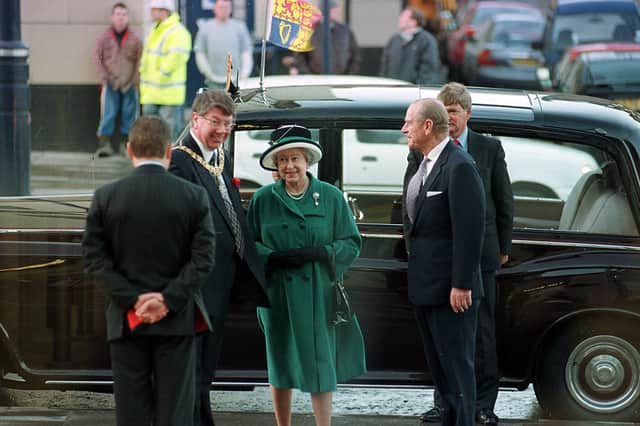Prince Philip's unstuffy approach to public duties put people at their ease, as I discovered – John McLellan


It was a measure of the strength of Scotsman Publications and the connections of our then proprietors the Barclay twins, that both the Queen and Prince Philip officially opened the new Holyrood Road headquarters in November 1999, all the more remarkable because, unlike most of these Royal inaugurations, we had only moved in the day before.
The editors and senior managers lined up in the foyer and as the Royal couple shook hands I had a problem because I’d broken mine a few days before. “Oh, what happened to your hand?” asked the Queen. “Broke it on Saturday playing rugby, ma’am,” I replied. “An occupational hazard, I suppose.”
Advertisement
Hide AdAdvertisement
Hide AdQuick as a scrum-half, Prince Philip interjected. “No, this is your occupation, man, that’s your sport,” he said, and of course he was right.
We had more of a conversation with the Royal couple than we had with the Barclays, who we never met again, but I did have a second meeting with Prince Philip, at the Golden Jubilee reception for the Press at Windsor and again he was relaxed, despite newspaper people hardly being his favourite company, bantering about a story we’d published in Scotland on Sunday as we slurped down industrial-strength gin and tonics.
I was there, but did not hear his infamous question to then Scottish Conservative leader Annabel Goldie if she had knickers made of the same tartan fabric draping the room during the Pope's 2010 visit to Holyroodhouse, but his unstuffy approach to his public duties put more people at their ease than on edge and was a reminder that the Royal Family were people with imperfections like everyone else.
There is nothing surprising about the death of a 99-year-old man who had been ill for some months, but apart from the obvious sadness about the loss of a loved one for any family, with national loss was, for me anyway, the immediate sense of an era closing.
Not closed yet, because that is still to come, but with constitutional change driven by Brexit and the independence argument, together with the devastating tragedy of the pandemic, his passing after over 70 years at the heart of British public life unquestionably marks a significant moment and a portent of what’s to come.
It’s hard to quantify the value of a symbol of continuity stretching back centuries, but the sniffy obituary in the New York Times – “He was essentially a second-fiddle figurehead” – gives a clue, when the USA has had the likes of Richard Nixon and Donald Trump as head of state to represent their nation’s values. It’s also why the “me me” approach of Meghan Markle shows how easy it is to misjudge what the Royal Family’s role is really all about.
It’s also easy to play up the undoubted privileges the Royal Family enjoys, but the pact with the people, which the Sussexes so spectacularly failed to grasp, is that they serve unstintingly and uncomplainingly to the end. From that perspective there is no question Prince Philip paid his dues in full and, in all senses of the word, with interest.
A message from the Editor:
Thank you for reading this article. We're more reliant on your support than ever as the shift in consumer habits brought about by coronavirus impacts our advertisers.
If you haven't already, please consider supporting our trusted, fact-checked journalism by taking out a digital subscription.
Comments
Want to join the conversation? Please or to comment on this article.